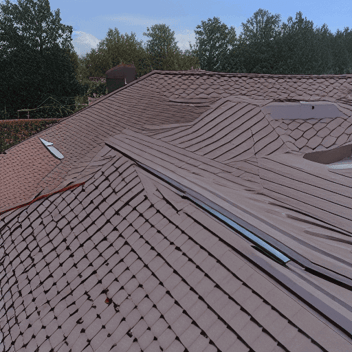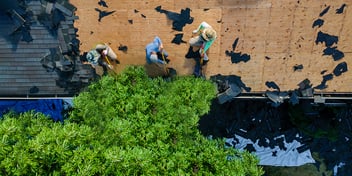- Home »
- Learningcenter »
- 3 tab vs architectural roof shingles
3-tab vs Architectural Roof Shingles
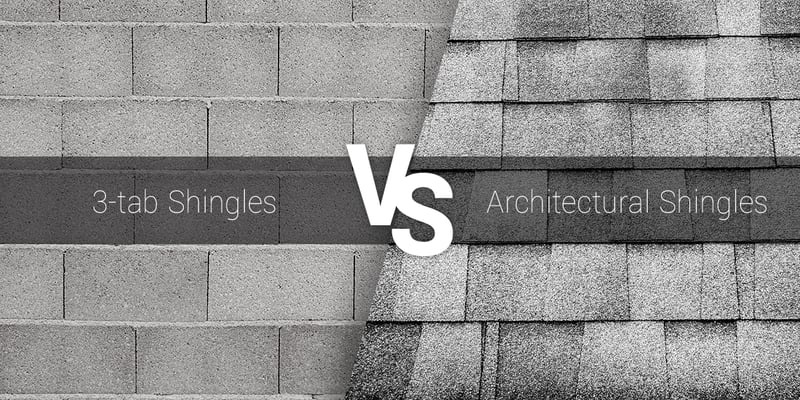
If you’re replacing the roof of your home or business, you probably have many questions swimming around your mind. One primary concern is what type of roofing material to use.
If you’re exploring the option of asphalt shingles, you’ll want to know that there are two main choices: 3-tab shingles and architectural shingles.
What are the differences when comparing 3-tab vs. architectural shingles? Is one option inherently better than the other?
Let’s look at everything you need to know to help you make an informed decision.
What Are 3-Tab Shingles?
3-tab shingles get their name because of the pattern at the lower edge of the shingles with three notches. This shingle is relatively simple to install and is composed of lightweight and thin material.
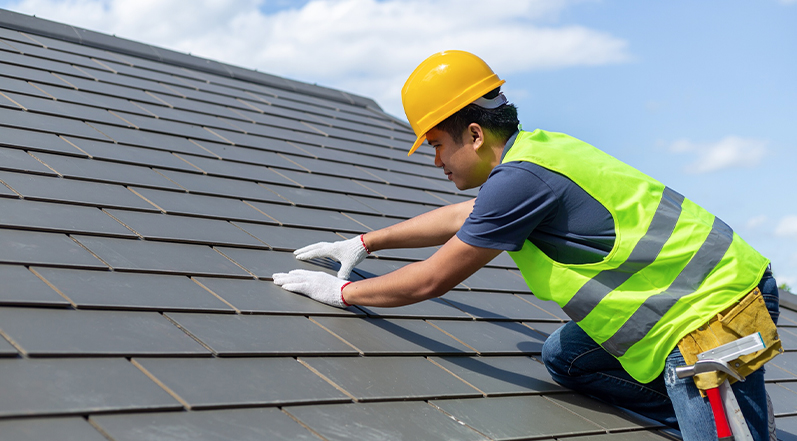
You can find 3-tab shingles with a textured or flat facade and various shapes and sizes.
What Are Architectural Shingles?
Architectural shingles have a base mat that is thicker and sturdier than standard 3-tab shingles. Able to mimic the visual appearance of many other types of roofing while offering durability and versatility, this type of roofing has grown in popularity in recent years.
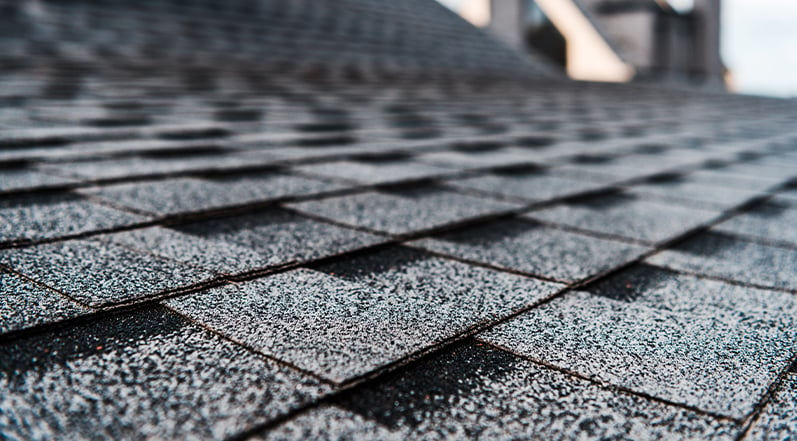
You might also hear architectural shingles called laminate, composite, or dimensional shingles.
3-Tab Vs. Architectural Shingles: What Is the Difference?
Both architectural shingles and 3-tab shingles are asphalt shingles, but they have many differences that set them apart. Before deciding which type of material to use for your next roofing project, you’ll want to consider how their performance varies across essential categories, such as water and wind resistance, longevity, and appearance.

1. Material Composition
3-tab shingles are composed of asphalt and adhesive with an outside layer of external granules and a fiberglass backing. Architectural shingles have a similar composition but are usually made with higher-quality materials, resulting in a thicker, sturdier, and more durable shingle than 3-tab shingles.

The adhesives used in architectural shingles are typically more robust than those used in 3-tab shingles. On top of that, the external granules are finer, more packed together, and of a larger quantity than 3-tab shingles; this makes for more durable and long-lasting shingles.
2. Appearance
You can buy 3-tab shingles in various colors; however, some people feel their appearance is flat and one-dimensional. On top of that, they can look more artificial and less natural than architectural shingles.
If you’re looking for shingles that look similar to tile or wood, architectural shingles are likely the way to go. Thanks to recent printing technologies, architectural shingles are available in a wider variety of colors than previously, offering options that look more natural than man-made.
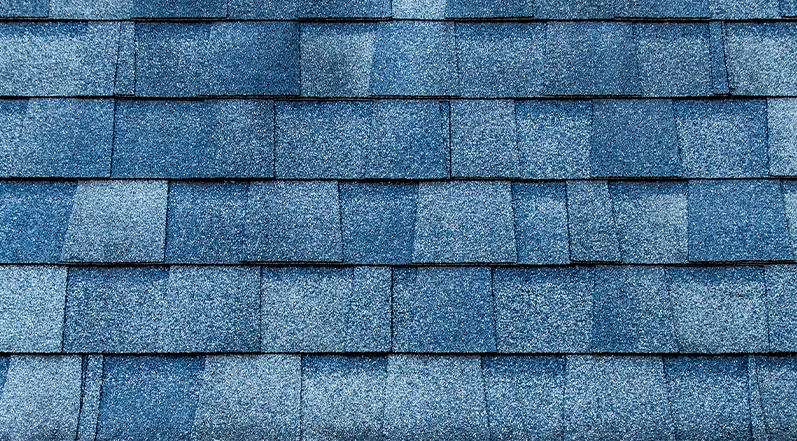
Architectural shingles can be an excellent option for people interested in more expensive roofing materials such as cedar shakes or slate but who want to stay within a budget. Architectural shingles offer a more unique and visually appealing aesthetic if you plan to boost your home’s curb appeal.
While many people prefer the visual appearance of architectural shingles to 3-tab shingles, there is a traditional aesthetic to 3-tab shingles that can be well-suited to many homes.
3. Lifespan
Architectural shingles are made out of higher-quality materials and are composed more durably. When properly maintained, they can last for up to fifty years. It’s common for architectural shingles to come with a minimum 30-year warranty.
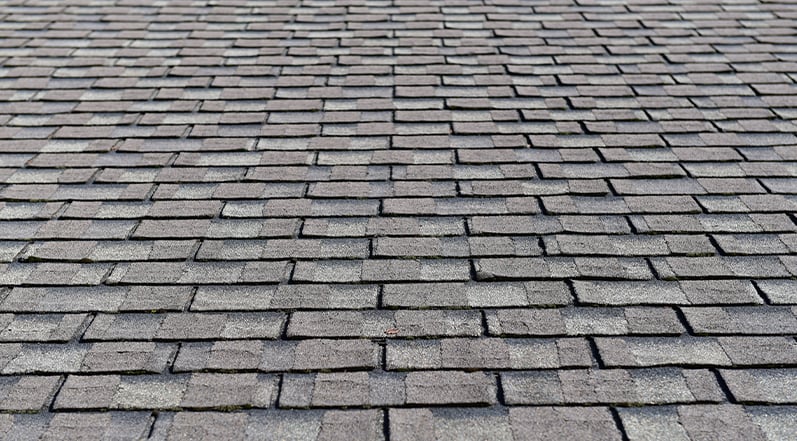
3-tab shingle roofs, on the other hand, typically last between ten and twenty-five years. Depending on several factors, including maintenance and climate, they can last for longer than twenty-five years. The average 3-tab shingles tend to come with warranties that offer twenty to twenty-five years of coverage.
4. Weight
3-tab shingles are lighter than architectural shingles, which are about 50% heavier than standard 3-tab options because they are thicker and heavier due to being composed of multiple material layers.

This extra weight makes architectural shingles more durable than 3-tab and longer lasting. On the other hand, 3-tab shingles are often faster and easier to install because they are lightweight; at the same time, this also means they can be easier to break during installation.
5. Wind Resistance
If you live in a climate that regularly deals with windy weather, you’ll want to know that 3-tab shingles aren’t nearly as good at dealing with the wind as architectural shingles; this has to do with their lightweight nature.
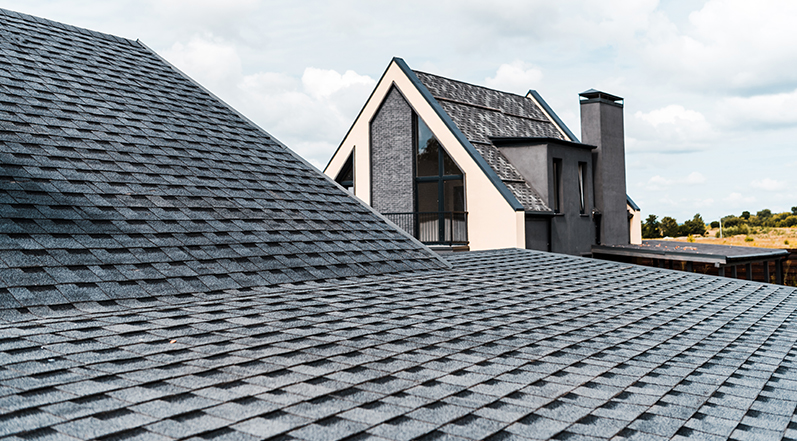
Architectural shingles are thicker and use stronger adhesives, meaning that they are better able to stand up to wind than 3-tab shingles. If you live in a windy area, you’ll want to consider that 3-tab shingles are typically rated up to 60 miles per hour winds, while architectural shingles are often rated up to 120 mile-per-hour winds.
If you have missing or damaged asphalt shingles due to wind or other circumstances, check out our recent post on how to repair missing roof shingles.
6. Water Resistance
Architectural shingles are more water resistant than 3-tab shingles; this is because they are laminated and coated in fine, tightly packed external granules. While 3-tab shingles have a water-resistant coating that deflects UV light, they aren’t nearly as waterproof as architectural shingles.

It’s worth noting, however, that the shape of architectural shingles, when installed on a low-sloped roof, can make them more vulnerable to issues from wind-blown rain.
7. Warranties
The warranties for 3-tab shingles don’t offer as many years of coverage because the lifespan of these shingles isn’t as long as architectural shingles. The average warranty for these is between twenty and twenty-five years.

Coverage for architectural shingles can be forty years or longer and almost always offer at least thirty years. You can even find some contractors that offer lifetime coverage for architectural shingle warranties.
If you’re curious to learn more about the warranties you can expect when repairing your roof; this guide goes over the three main types of roof warranties and what you need to know about each one.
8. Maintenance
There are a lot of differences between 3-tab and architectural shingles in several important performance areas, but one thing they have in common is that they both require maintenance.
To keep your roof in good shape for its full potential lifespan, you’ll need to perform regular maintenance on both types of asphalt shingles.
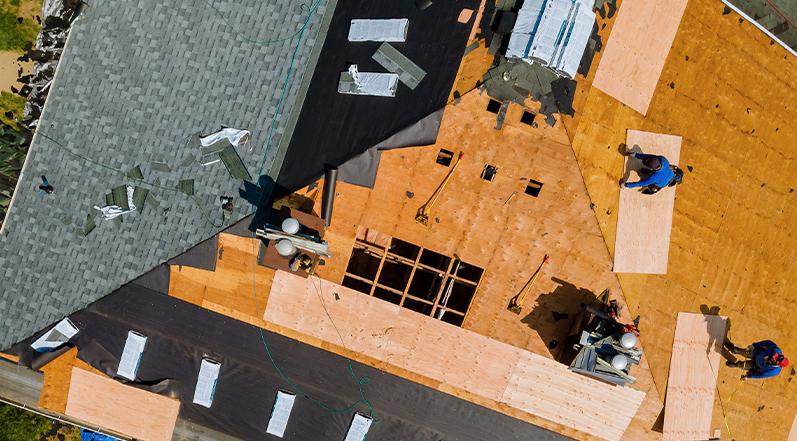
This regular maintenance includes (but isn’t limited to):
● Performing biannual roof inspections: You can save money in the long run if you inspect your roof in the spring and fall every year. You can hire professional roofing contractors to look for wind and water damage, cracking, staining, fading, and buildup.
● Clearing gutters and downspouts: If your gutters clog and overflow, they can leak water onto your siding or brick by getting under your asphalt shingles. When you don’t clear out your gutters regularly (typically recommended in the spring and fall), it can lead to roof leaks, rotting wood, and bubbling wall paint.
● Trimming tree branches and removing debris: It’s essential to make sure that tree branches are trimmed away from the sides of your home and your roof so they don’t fall on your home during storms. You’ll also want to clear debris from your roof bi-annually to help keep your gutters working and protect your shingle’s granules.
● Sealing the flashing: Flashing consists of thin metal strips that run along joints and edges of your roof and around penetrations like vents, pipes, and skylights; this helps to keep your roof watertight. Flashing is the weakest point of your roof, so you’ll want to have roofing contractors caulk any gaps found during the inspection using a waterproof sealant.
● Cleaning dirt and algae: Algae can reduce your roof’s ability to reflect sunlight and weaken your roof’s structural integrity. Because they are living organisms that will feed on the granules of limestone in your shingles, algae can actually lead to your shingles lifting and detaching. Additionally, you should also wash your asphalt roof twice a year to help keep it free of dirt.
● Monitoring humidity levels: As a part of your roof maintenance schedule, you’ll also want to monitor humidity levels in your attic. When you inspect your roof bi-annually, you’ll also want to make sure that your attic’s vents are free of insect hives, insulation, or rodent nests. It’s also crucial that vents aren’t blocked by items stored in the attic. When proper humidity levels are maintained in the attic, it can help prevent ice dams in cold climates as well as mold and mildew growth.
● Monitoring moss growth: If moss is allowed to thrive on your asphalt shingles (and many other types of roofing materials, for that matter), it can lead to leaks, exposed underlayment, and lifted shingles.
● Taking care of repairs as soon as possible: The best news after a roof inspection is that everything is in good working order. However, if you learn that your roof needs some work, you’ll want to schedule the repair work as soon as possible. The sooner you replace missing shingles, replace flashing, caulk your gutter, or perform whatever repairs are needed, the better.
Performing preventative maintenance can help increase the longevity of your roof and reduce the necessity of performing emergency roof repairs.
9. Cost
Considering that architectural shingles outperform 3-tab shingles in a number of areas, it likely doesn’t come as a surprise that they are also more expensive.
On average, architectural shingles are 20% to 50% more expensive than 3-tab shingles. Not only are they made of higher-quality materials and heavier duty, but they also take longer to install.
If you’re on a tight budget, 3-tab is the more affordable option. One square of shingles covers 100 square feet, and one square of 3-tab usually costs around $270-$340 per square foot. The cost of architectural shingles per square is more like $300 to $550.

When choosing a roofing material, you can’t simply go off the up-front price when considering how much the project will cost you. You’ll also want to consider lifespan, maintenance, and potential roof repairs.
A 3-tab shingle roof will cost less right off the bat, but it would likely mean a shorter lifespan, more maintenance, and a higher likelihood of performing repairs along the way. At the same time, 3-tab shingles tend to be cheaper to repair if they do experience storm damage.
Did you know that there are three different categories of roof repair? This guide goes over each category in detail to help you stay informed as a homeowner.
Which Type of Shingle Is Better?
3-tab shingles and architectural shingles are both solid options for residential roofs. While architectural shingles outperform 3-tab shingles in durability, lifespan, and a few other categories, 3-tab shingles might be the right choice for homeowners on a strict budget or rental property owners.
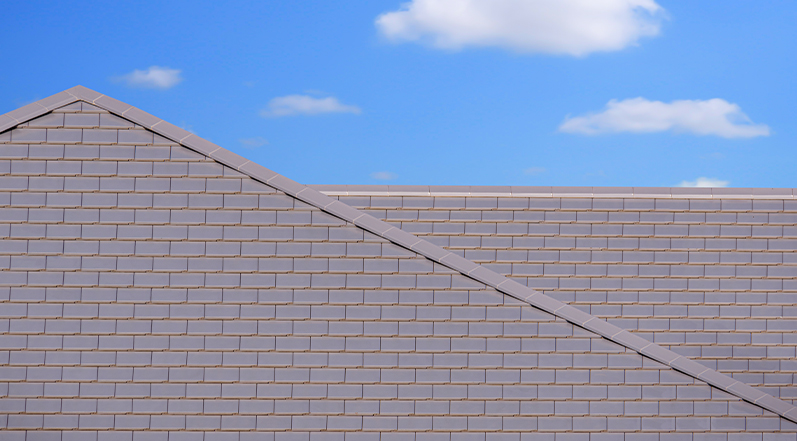
Architectural shingles are likely the better option if you’re looking for longevity, prioritizing aesthetics, or choosing a shingle type for a high-end home.
How Do They Compare to Other Roofing Materials?
Before you choose between 3-tab and architectural shingles, it’s worth remembering that there are a number of other roofing materials out there you might want to consider.

Some other common options include:
● Metal: metal is a popular material for residential and commercial buildings that is durable and long-lasting. It is typically more expensive than asphalt shingling and is best installed by experienced contractors. While metal roofs are durable and long-lasting, they can be noisy in rain storms and dented by falling objects or hail.
● Composite/synthetic: Also more expensive than asphalt shingles, composite shingles are very resistant to leaks and weather damage. Available in a variety of colors and styles, these shingles typically require professional installation.
● Cedar shake: Cedar shakes are a beautiful but high-maintenance option for roofing materials. Though they are resistant to leaks and weather damage, they need to be treated with a sealant regularly and replaced every ten to twenty years, depending on your climate type.
● Slate: Slate roofs are a beautiful and historic option that offers the highest durability of all of the materials on this list. These roofs can last 75 or even 100 years, but this longevity comes at the cost of also being a very expensive roofing material. On top of that, slate is incredibly heavy, so your home needs to be framed, retrofitted, or built to carry the weight in order for slate to be a viable option.
Each of these materials has its own pros and cons and range in lifespan, cost, required maintenance, and visual appeal. Be sure to check out our post on the top five roof materials for a roof replacement to learn more.
Are You Looking For Experienced Roofers in the Atlanta Area?
When it’s time to replace your roof, you want to know that the roofing professionals you hire are knowledgeable, hardworking, and trustworthy. At Colony Roofers, we pride ourselves on providing incredible customer service and high-quality, affordable roofs.

No matter what your roofing needs are in the Atlanta area, you can always trust Colony Roofers. If you’re interested in a quote or simply have a question, please feel free to contact us today.
 Call (678) 365-3138
Call (678) 365-3138

